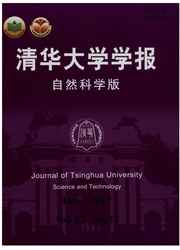

 中文摘要:
中文摘要:
为得到更加精确的声道共鸣特性,人们越来越关心说话时声道的结构及其形状变化。该文从MRI 3-D图像数据中提取了汉语普通话7个单元音[a]、[o]、[]、[i]、[u]、[y]、[e]的声道边缘、中线和矢量半径数据,并沿着声道中线从唇到声门等间距截取声道的36个截面,对于每个截面,根据矢量半径的大小使同一个位置的截面形状作线性过渡,从而建立用矢量半径驱动的汉语普通话立体声道模型。计算模型的共振峰并合成语音样本,在与自然语音对比的听辨实验中,该模型取得了较好的语音合成效果。
 英文摘要:
英文摘要:
Analyses of the vocal tract resonant characteristics need accurate models of the vocal tract shape. This article presents a three-dimensional Mandarin vocal tract model using vocal tract shape data and midsagittal radius vector data from MRI images for seven Mandarin sustained vowels [a], [o], [γ], [i], [u], [y] and [e]. The vocal tracts images were cut into 36 sections of equal distances along the midline of the vocal tract. The Mandarin vocal tract model for each section is then driven by the length of the radius vector in the cross sectional images. The sound synthesized by this mode] sounds very much like natural speech.
 同期刊论文项目
同期刊论文项目
 同项目期刊论文
同项目期刊论文
 期刊信息
期刊信息
